News
Can you Climb a Boat Ladder in Sidemount?
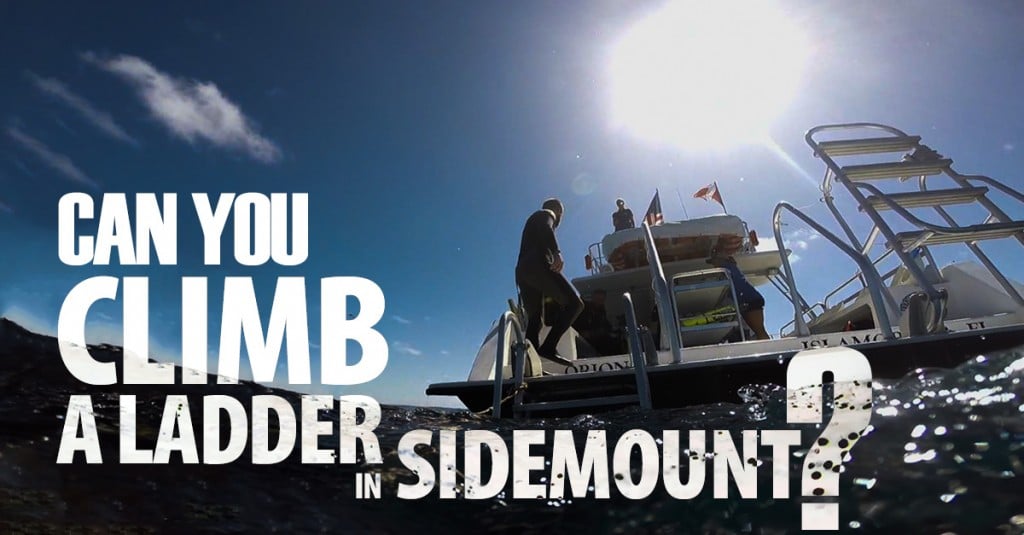
by John Bentley
Sidemount is mainstream as a gear configuration and it works well for lots of people. While it originated in cave sites, it’s a common sight on dive boats, local quarries, and shore sites in present day. For good reasons, some people are hesitant about sidemount boat diving. This is due to two main reasons, both involving the wide surface profile of sidemount:
- Walking down boat aisles is hard in wide-mount.
- Climbing up small boat ladders is hard in wide-mount.
While in a horizontal profile underwater, sidemount feels very balanced and streamlined. Stand on the surface though and you’re wider than your pals in backmount. How do you mitigate those problems and enjoy a boat dive in your preferred gear configuration.
General Tips
- Leashes
Not all sidemount instructors utilize leashes in their courses, but for boat dives they’re almost required. Leashes, chokers, necklaces; there are a number of names for the clips that offer a hard connection, often paracord, that secures the cylinder to the harness. This is typically in addition to the bungee that snugs your cylinder into place. - Bungees
These elastic devices help snug the cylinders closer to the diver’s body when underwater. Typically, the diver does not want these attached on the surface as it puts stress on the bungee system, decreasing its life. - S-Drills
Often times with sidemount, you enter the water without everything hooked up. Routing on the surface is pretty difficult so a popular method is to have 1 cylinder (often the left) all hooked up (except the bungee) when entering the water. That way your BC can be inflated and there is a 2ndstage off which to breathe. After entering the water, you descend a few feet, attach the bungees, route any hoses, and perform an s-drill. When well-practiced this can be done on the descent and done by 15ft (6m).
Getting off the Boat
- Single top clip method
This popular method still makes you wider than backmount, but is easier to manage. Attach the left cylinder in full – top clip, bottom clip, LPI, and 2nd Pressurize the system and test functioning of the breathing and inflation. Then top clip only the right side. Without the bottom clip, the cylinder can hang freely in front of you. Then you’ll only be as wide as one cylinder. - Drop cylinder method
For boats that tie into the dive site in calm waters you can have the mate hand cylinder(s) or place cylinders on a drop line. This way you can enter the water with as many or few cylinders as you’d like. For people that dive sidemount for medical considerations, this may be the only realistic option. - Get there early method
This is the least realistic of the methods and involves the right kind of boat. Get there as early as possible and grab the furthest stern seat to hook up and fall in once it’s time to dive. While especially convenient on drift dive boats with no transom, it isn’t the best method.
Getting on the Boat
Boat ladders are scary, there’s no way around that. They’re scary because people don’t know how to handle them to start, so let’s start with general tips.
- Approach the ladder slowly and thinking
Your goal is not to get up the ladder; it is to get on the ladder. That’s the difficult part. Slowly approach the ladder, listen to the crew, and be cognizant of the boat’s movements. - Plant those feet, don’t lock your arms, and get all your weight on the ladder.
Treat the ladder like a leg press machine. After your feet are on the bottom rungs, straighten your legs and the ladder is no longer your enemy; it’s your spot to hang out. - Go up rung by rung and plan your hand holds. Look ahead to where your hand will be for support.
- Allow the DM to help out.
You’re carrying a lot of extra weight and are probably unstable. It’s ok to get help. Just make sure to tip appropriately.
With the basics down, let’s look at sidemount-specific steps. Decide on your plan of action beforegetting in the water and visualize it for the most success. Cleaning your cylinder on the safety stop is a common prep method that pays off when getting back on boats. Simply remove the bungee, bottom clip, and temporarily stow the regulator on one cylinder. That leaves 1 cylinder attached only by the top clip, making it fast to do any of the below methods.
- Hand up method
This is one of the more popular methods. Just hand one cylinder up to the DM after approaching the ladder. For fins-off ladders, it’s important to not remove your fins until you’re ready to climb the ladder. So hand the cylinder up, go back to the tag line, remove your fins, then approach the ladder for exit - Muscle it up
This option isn’t realistic for everyone, and exertion after a dive isn’t a good idea. With that said, maybe you’re diving steel 50s, AL 80s, or AL 40s. Lighter cylinders like that can go up the ladder pretty easily, especially employing the single top clip method on one side. Larger cylinders will probably just result in a clunky climb and wobbly walk. - Drop line
If you entered with a drop line it’s pretty easy to exit with one! Just clip off on your swim to the stern of the boat.
So there it is. With a few quick tips, a decision, visualization, and a little practice, you can take your preferred gear configuration to the open water off a boat. The best way to learn this is to take a course with a TDI instructor. Find one here: https://www.tdisdi.com/search/?area=instructors
To find out more about International Training, visit www.tdisdi.com.

Gear News
Go anywhere with Stahlsac
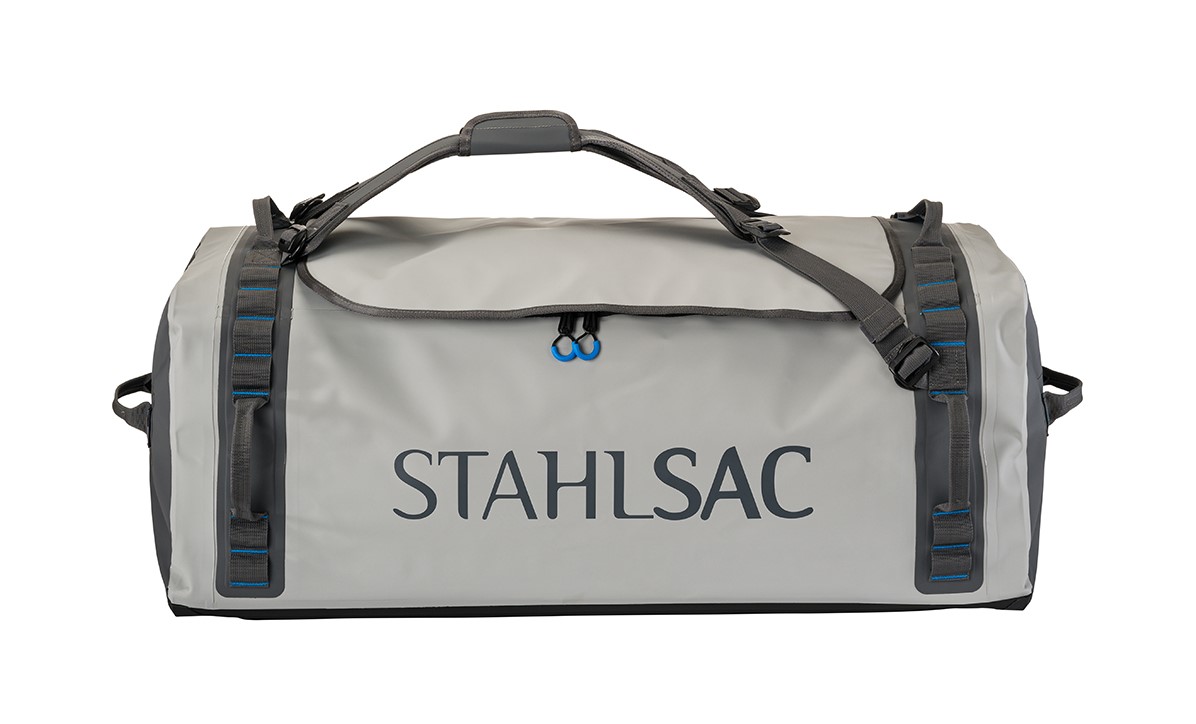
Stahlsac dive bags and travel luggage are built for our community of divers, surfers, kayakers and outdoor explorers who need bags that are constructed with durability, toughness, and 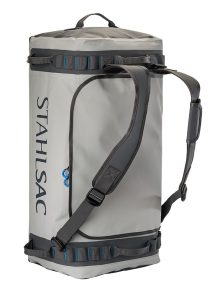 the highest quality the industry has ever seen. We were founded by one man determined to build better watersports and dive bags, and today, that mission is carried on by many. Adventure doesn’t just present itself; it requires discovery. When we design dive bags, we make sure they are tough enough for you to explore in all conditions—warm and cold, wet and dry—to the nearest and farthest reaches of the earth. And for those times you want to push the boundaries of adventure, Stahlsac dive bags make sure you can truly GO ANYWHERE.
the highest quality the industry has ever seen. We were founded by one man determined to build better watersports and dive bags, and today, that mission is carried on by many. Adventure doesn’t just present itself; it requires discovery. When we design dive bags, we make sure they are tough enough for you to explore in all conditions—warm and cold, wet and dry—to the nearest and farthest reaches of the earth. And for those times you want to push the boundaries of adventure, Stahlsac dive bags make sure you can truly GO ANYWHERE.
Abyss Duffels
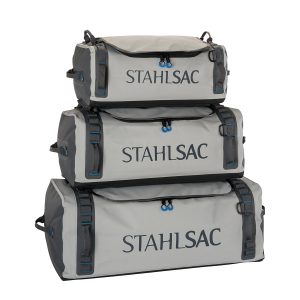 Made to be your partner-in-crime on every adventure, Stahlsac’s Abyss Duffels protects your gear from Mother Nature’s worst. Tough and 100% waterproof with double-TPU nylon material that shrugs off daily wear-and-tear, and RF-welded seams further boost the bag’s potential for lifelong exploring. Get Wet. Get Lost. Go Anywhere with Abyss.
Made to be your partner-in-crime on every adventure, Stahlsac’s Abyss Duffels protects your gear from Mother Nature’s worst. Tough and 100% waterproof with double-TPU nylon material that shrugs off daily wear-and-tear, and RF-welded seams further boost the bag’s potential for lifelong exploring. Get Wet. Get Lost. Go Anywhere with Abyss.
- A weatherproof duffel for trips, travel, and adventure
- Ultra-durable double-TPU nylon protects your gear
- Material repels water and keeps your equipment dry
- RF-welded seams are flush, tough, and waterproof
- Removable straps transform duffel into backpack
- Zippered internal stow compartments carry essentials
- External zippered flap is easy to open and close
- Welded external handles make transporting a breeze
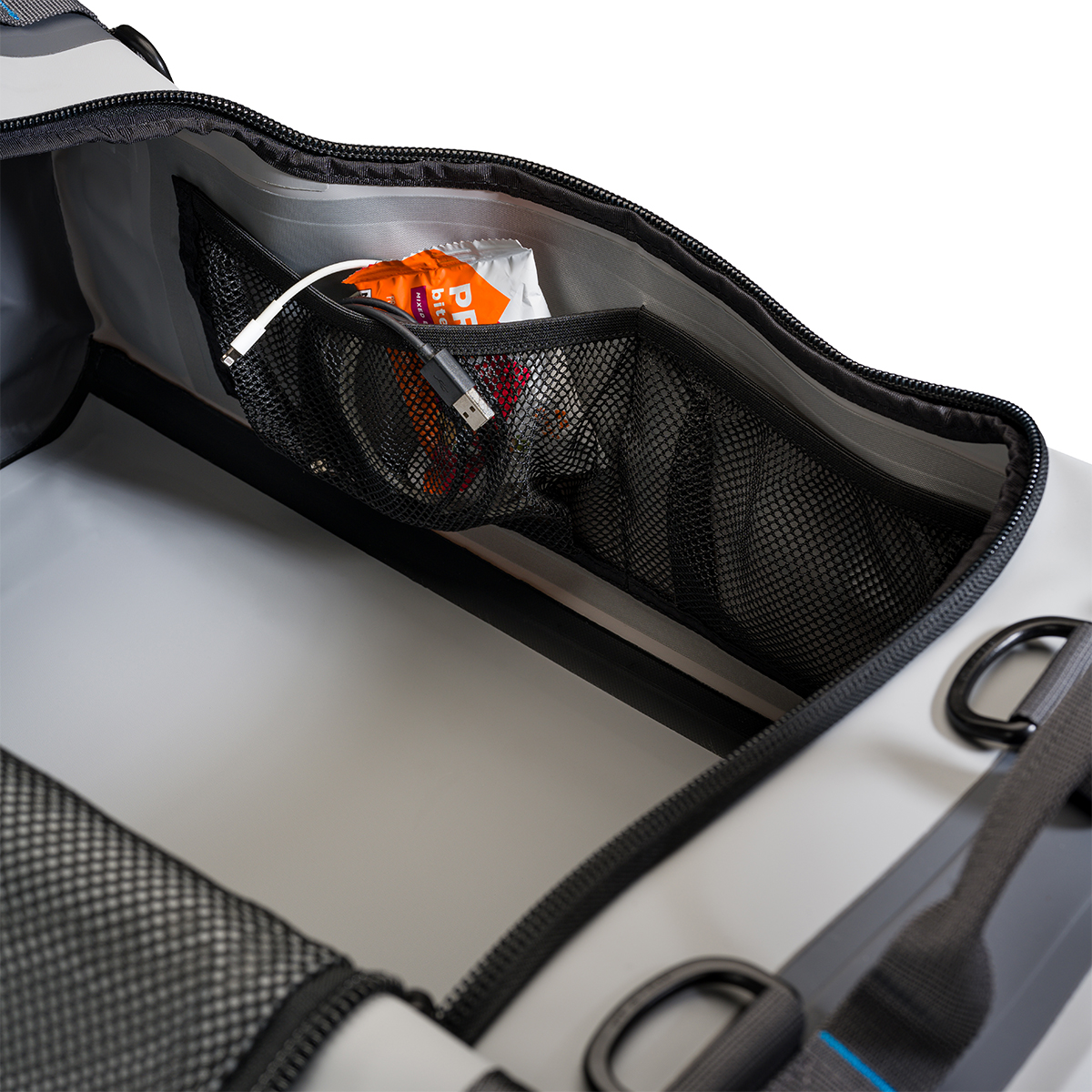
Panama Mesh Backpack
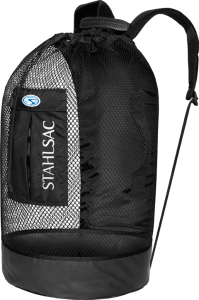 The most copied design in scuba diving, the Stahlsac Panama Mesh Backpack is the “original” design and features two high-density foam padded shoulder straps, extra durable polyester mesh, duffel bag handles and our unique zippered dry pocket inside that combines with a wet pocket outside. The bottom’s built from reinforced 18-gauge PVC nylon to combat the wear and tear of your active coastal lifestyle, and, as a bonus in every bag, we supply a 12″ x 12″ mesh drawstring satchel for extra stowing utility. Pack up your beach kit and go.
The most copied design in scuba diving, the Stahlsac Panama Mesh Backpack is the “original” design and features two high-density foam padded shoulder straps, extra durable polyester mesh, duffel bag handles and our unique zippered dry pocket inside that combines with a wet pocket outside. The bottom’s built from reinforced 18-gauge PVC nylon to combat the wear and tear of your active coastal lifestyle, and, as a bonus in every bag, we supply a 12″ x 12″ mesh drawstring satchel for extra stowing utility. Pack up your beach kit and go.
- Density foam padded shoulder straps
- Outside wet/dry pockets
- 2 Carry handles
- Tough, snag-resistant polyester mesh
- Reinforced PVC bottom
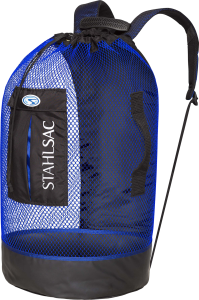
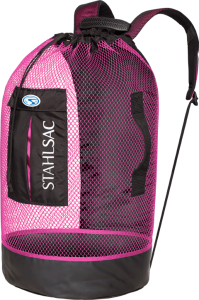
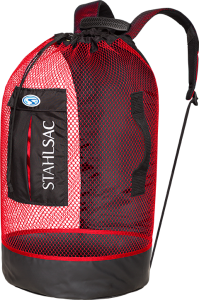
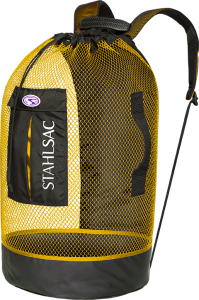
For more information about Stahlsac bags, visit www.stahlsac.com/dive-bags.
Sea & Sea is the home of Stahlsac and other leading diving brands in the UK.
Blogs
EXCLUSIVE: Jeff Goodman interviews Mark Spiers, CEO of New Scuba Diving Training Agency NovoScuba

In a video recorded exclusively for Scubaverse.com, Jeff Goodman interviews Mark Spiers, CEO of new scuba diving training agency NovoScuba.
Find out more about NovoScuba at www.novoscuba.com.
-

 News3 months ago
News3 months agoCapturing Critters in Lembeh Underwater Photography Workshop 2024: Event Roundup
-

 Marine Life & Conservation Blogs3 months ago
Marine Life & Conservation Blogs3 months agoCreature Feature: Swell Sharks
-

 Blogs2 months ago
Blogs2 months agoMurex Resorts: Passport to Paradise!
-

 Blogs2 months ago
Blogs2 months agoDiver Discovering Whale Skeletons Beneath Ice Judged World’s Best Underwater Photograph
-

 Gear Reviews3 weeks ago
Gear Reviews3 weeks agoGEAR REVIEW – Revolutionising Diving Comfort: The Sharkskin T2 Chillproof Suit
-

 Gear Reviews3 months ago
Gear Reviews3 months agoGear Review: Oceanic+ Dive Housing for iPhone
-

 News2 months ago
News2 months agoPADI Teams Up with Wellness Brand Neuro to Drive Ocean Change and Create a Blue State of Mind
-

 Marine Life & Conservation2 months ago
Marine Life & Conservation2 months agoSave the Manatee Club launches brand new webcams at Silver Springs State Park, Florida

















